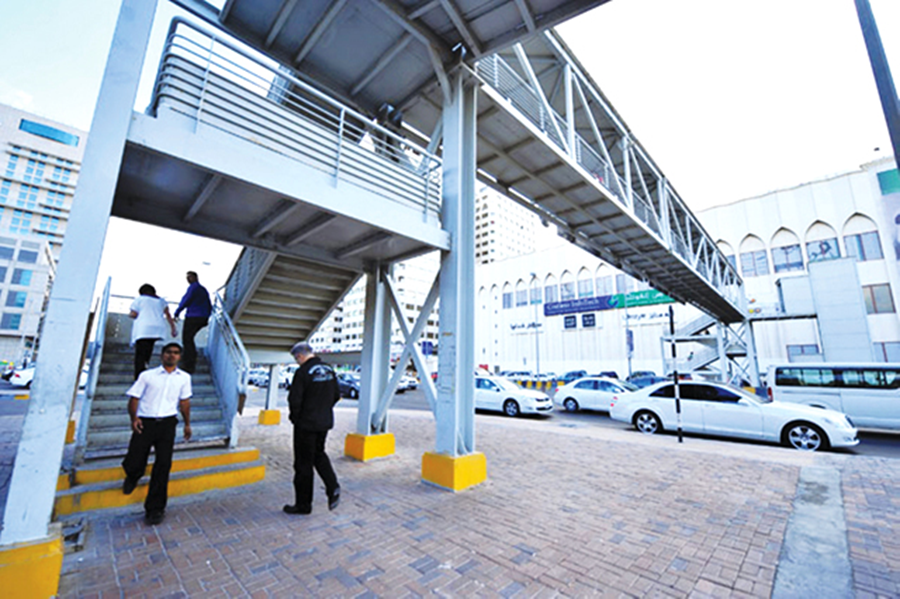Four years after three children died in an accident that triggered The National’s Road to Safety campaign, the UAE’s roads are considerably safer, experts say.
Improved infrastructure, road design and safety standards, enforcement, traffic control and incident response, and pedestrian management have all been factors.
“Authorities here are much more conscious of designing roads and providing clearer signage to minimize weaving and confusion,” said Glenn Havinoviski, an associate vice president of transportation systems at Iteris, a United States company that specializes in traffic management.
“Police have obviously made great strides in incident response and incident management.
“Road-service patrols and improved site management at accidents are things that have been implemented in the last five years in the region, which helps reduce the duration of accident delays.”
The latest statistics show the number of crashes in the UAE fell from 6,700 in 2011 to 6,454 last year. Deaths were cut from 720 to 628, and injuries decreased from 7,808 to 7,586, according to the Ministry of Interior.
The nationwide push to tackle the carnage on our roads followed a tragedy in Abu Dhabi on June 29, 2009, when three Emirati children and their nanny were hit by a speeding car as they tried to cross Airport Road to get to Carrefour.
The girls, Shaikha Salem Al Mansouri, 4, and her sisters Damayer, 6, and Mariam, 7, died.
The nanny, Nurshaida Parjan, 24, suffered severe brain injuries. She never recovered and died in April 2010 after being moved home to Indonesia.
The National’s campaign has strived to analyse the causes of the high traffic mortality rate and to bring about changes to reduce dangerous behaviour by motorists, pedestrians and cyclists.
A pedestrian bridge at Carrefour at the spot where the girls died is one of nine built last year.
Abu Dhabi Municipality plans to build 13 more pedestrian bridges this year, including near the Pakistani School and Madinat Zayed Shopping Centre on Muroor Road, near Khalidiyah Mall, in Bain Al Jesrain and in Baniyas.
Road deaths in Abu Dhabi dropped to 263 last year from 409 in 2009. The fatality rate fell from 22.7 per 100,000 people in 2009 to 11.5 per 100,000 last year, according to Bader Al Qamzi, the director of integrated planning at the Department of Transport.
The Abu Dhabi Safety and Traffic Solutions Committee has set a new target of cutting the death rate to a maximum of nine deaths per 100,000 by 2021. Its initial target was 16 per 100,000 by 2021.
The committee was created by the Executive Affairs Authority in January 2009 to deal with all aspects of road safety and commuting. Other members are from the departments of transport and municipal affairs, police and the Urban Planning Council (UPC).
“The road infrastructure and network here is one of the best in the world,” said Roshanara Sait, a road-safety expert and director of Ciel Marketing and Events in Dubai.
“The authorities take road safety very seriously. Abu Dhabi Police are constantly in the media promoting many road-safety initiatives.”
Two major factors contribute to accidents, said Ibrahim Al Hmoudi, transport planning department manager at the UPC. These are road design – which causes 20 per cent of accidents – and driver behavior, behind the other 80 per cent.
Pedestrians account for 29 per cent of road deaths in the UAE, mainly caused by cars speeding, a large distance between junctions and lack of safe mid-block crossing, weaving movements and right-turn lanes.
To reduce speeding and create a safer environment for pedestrians, a new layout for right-turn lanes, larger and safer pedestrian refuge islands and unobstructed pedestrian walkways are being introduced for all new streets within urban areas in Abu Dhabi.
Residents and safety experts agree there have been considerable improvements in road safety since 2009, but say dangerous driving behavior continues.
“Tailgating at 140kph or higher is one thing,” Mr Havinoviski said. “Forcing someone out of a lane by passing them on the left while straddling the lane and the shoulder is much worse.”
Other common infractions include changing lanes quickly and often, running red lights, and texting or calling while driving.
Too many parents still do not ensure that their children are properly restrained, and too few adult passengers wear seat belts,
“Overconfidence and a lack of driving experience contribute to bad behaviour on the roads,” Ms Sait said.
She now sees a wider use of seat belts thanks to stricter law enforcement and regular road-safety awareness campaigns.
But Dr Salaheddine Bendak, an associate professor at the Department of Industrial Engineering at the University of Sharjah, said the low seat-belt compliance rate, especially among passengers in the rear, was to blame for many otherwise avoidable fatalities.
The 2013 Global Status Report on Road Safety, which was based on 2010 baseline data, suggested three key federal laws the UAE needs: requiring back seat passengers to buckle up, making child car seats mandatory, and introducing helmet standards for motorcyclists.
The Government has been discussing legislation for mandatory child car restraints since 2008.



